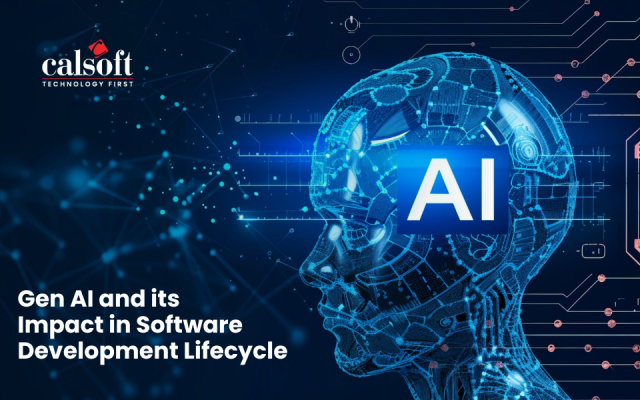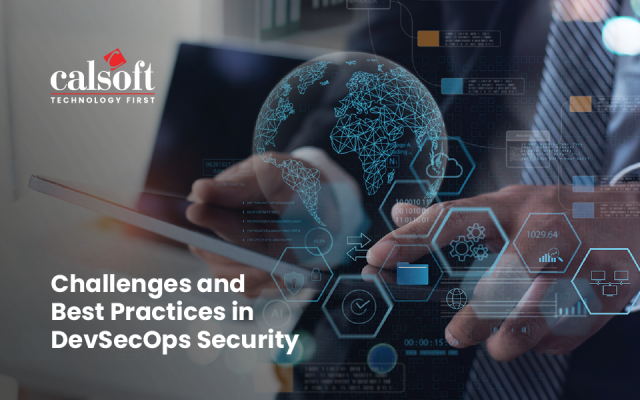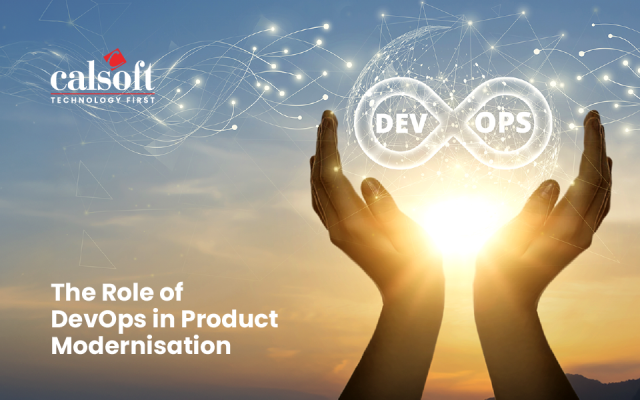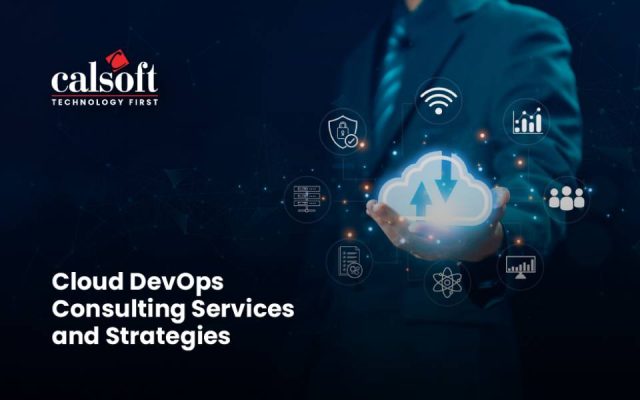DevOps is the most discussed technology trend in the software industry. This transformative force, which is the fusion of software and development, reshapes how enterprises advance toward software development, delivery, and IT operations. Imagine developers and operations team going partners or hooking on to ensure the release of top-grade software!
DevOps emphasizes collaboration or teamwork, and proper communication, to narrow the gap between the development and operations teams. This is to realize a culture of continuous development in businesses Enterprises need to embrace agility, innovation, and high efficiency to drive technological advancements and to remain competitive in the market today. In this digital era, DevOps practices are transforming to shape industries and businesses in 2024. Read the blog to explore the bright future of DevOps in the software industry, and the emerging DevOps trends in 2024.
Introduction to DevOps and its Growth in the Market
DevOps practices integrate software development (Dev) and Information Technology (IT) operations (Ops) to curtail the systems development life cycle. This set of practices helps to underpin key features and updates often aligning with business goals. DevOps practices break down silos, encouraging collaboration and shared responsibility for the application development and delivery process. DevOps enhances collaboration by involving team members from distinct areas such as Security, Product Owners, Quality Assurance (QA), Developers, and System Administrators. The streamlining of the application delivery process facilitates enterprises to deliver high-quality services, responding quickly to market demands. This reduces complexity, whilst saving time and capital on resource allocation.
Let’s explore the DevOps concept, top trends, and its future scope. As DevOps continue to evolve, it is important for enterprise to stay updated about the latest trends, which helps to maximum utilize this technology to strengthen the businesses. This growth can be recognized as the ability of DevOps to mitigate the challenges of conventional methodologies.
- Containerization and Orchestration: Containers are gaining traction among developers, and it is anticipated to be adopted by several organizations in the coming years. Containerization facilitates developers to quickly deploy applications with no concern regarding the core or underlying infrastructure or environment. Together with open-source container orchestration framework like Kubernetes, containerization introduces scalability, to ensure high performance and availability of applications across all environments.
- Microservices Architecture: Microservices architecture is prevalent among DevOps team as it enables easy updates, ensuring high availability and reliability of applications. This is accomplished by disaggregating applications into independent software modules which performs specific task in the application. This helps developers to work on the independent modules, isolating and avoiding interference from other parts of the system. This also enhances the scalability and flexibility to update the applications or the modules, without affecting the other independent modules.
- AI-Driven Automation: AI-driven processes facilitate predictive analytics and intelligent automation, which provide valuable insights, helping DevOps team to build data-driven and proactive decisions. This helps to optimize various factors of software development, allowing the team to automate tasks, enhance performance efficiency by detecting potential threats or anomalies.
- Edge Computing: The amalgamation of edge computing and DevOps is becoming popular in the market. DevOps practices are expanding over centralised Data Centres (DCs). This is to deliver latency-sensitive applications, and address the potential challenges of distributed architectures, guaranteeing better user experience with high performing applications.
- GitOps: GitOps model utilizes the distributed version control system Git for infrastructure and application configuration. This helps to enhance the coordination among developers who are jointly involved in the software development process. The adoption of GitOps practices, support automated continuous delivery and infrastructure management, enhancing transparency, traceability, and collaboration among development and operations teams.
- Kubernetes: This open-source container orchestration framework automates, deploys, scale, and orchestrate the clou-native applications, underpinning supreme flexibility, transferability, and strength. For instance, Kubernetes framework is compatible with DevOps tools and frameworks such as Helm, Istio, Jenkins, and Tekton.
- Multi-Cloud and Hybrid Environment: Enterprises are widely employing the capacity of cloud solutions, migrating towards multi-cloud and hybrid environments. This necessitates the evolution of DevOps practices and processes, where the DevOps teams require to proficiently run and manage applications and infrastructure across varied cloud providers and on-premises surroundings to guarantee continuous integration and optimal performance.
- Infrastructure as a Code (IaC): IaC helps DevOps teams to interpret and control infrastructure resources over code, avoiding manual procedures. This practice of considering infrastructure configurations as code, enable organizations to achieve consistency and scalability, reducing the complexity of infrastructure management However, to effectively adopt and realize IaaC in DevOps workflows demands proper planning, version control, and team collaboration.
- Continuous Integration (CI) and Deployment: CI and deployment practices easily automates the deployment process, realizing faster Time-to-Market (TTM), reduced failures due to manual faults, and enhanced productivity. This is achieved with the CI capability of repetitively blending code modifications into a central source. This method lets teams to distinguish and resolve integration problems on initial stages, steering to superior collaboration and quicker development cycles. On the other hand, Continuous deployment automates the delivery of software modifications to production environments.
- Low-Code Development (LCD): This approach enables DevOps teams to build applications momentarily and effortlessly. The key feature of LCD includes developing applications with minimum coding skills despite of technical expertise. This reduces the time spent on debugging and writing complex codes to develop intricate User Interfaces (UI). LCD introduces more flexibility in developing application framework by limiting the number of lines of code.
- Enhanced Observability and AIOps: Enhanced observability procedures such as monitoring, identifying, and categorization enables DevOps practices to extend their adoption of observability measures. This updated and advanced observability measures will provide innate understandings into applications and infrastructure. This keen distinguishability will enable proactive identification and resolution of possible issues. AI will complement these endeavours by exploring massive datasets and providing smart suggestions for performance optimization.
- Security: Enterprise should focus on security during development lifecycle as they embrace DevOps. Security should be integrated in the earlier stages of development process and enterprises should follow a holistic approach in implementing security into the initial stages of design and coding.

Understanding the significant growth of DevOps practices in the market, lets learn the key benefits of DevOps.
Enhanced Collaboration and Communication: The breakdown of communication barriers between development and operations team enhance collaboration throughout the whole software development lifecycle. This enhanced collaboration can help DevOps team to easily align with the business goals and demands.
Faster TTM: CI and continuous development emphasize automation, accelerating and streamlining the software development process, to quickly meet the market demands. The automation of the development process enables enterprises to stay competitive in the market.
Effective Resource Optimization and Reduced Cost: The automation of repetitive tasks leads to better resource utilisation, lowering failure due to manual faults. DevOps practices together with cloud adoption, offers scalable infrastructure, fostering cost-effectiveness.
Security Integration (DevSecOps): Software applications often encounters cybersecurity threats. DevSecOps is essential in the software development life cycle to integrate security into the DevOps process. This practical and proactive method helps enterprises detect and resolve security openness early in the development process, guaranteeing the release of secure and compatible software.
Summary
The DevOps revolution has become an incredible competency in the market, which enables enterprises to encounter the intricacies of digital transformation. Key market trends such as containerization, cloud-native applications, AIOps, and GitOps denote the continuous evolution of DevOps practices to meet the constantly fluctuating demands of the industry. These market trends bring many benefits such as enhanced collaboration, faster TTM, and cost reduction, ensuring good quality applications meeting the business objectives. Enterprises embrace DevOps to remain competitive in the digital era.
Calsoft’s expertise and large pool of DevOps consultants have created a dedicated Center of Excellence (CoE) to accelerate DevOps implementations and enhance the speed, quality, and security of application delivery. Calsoft’s DevOps consulting services focus on agile approach towards software development, testing, and IT operations, facilitating the customers to quickly adapt to changes and enhance overall operational performance.






